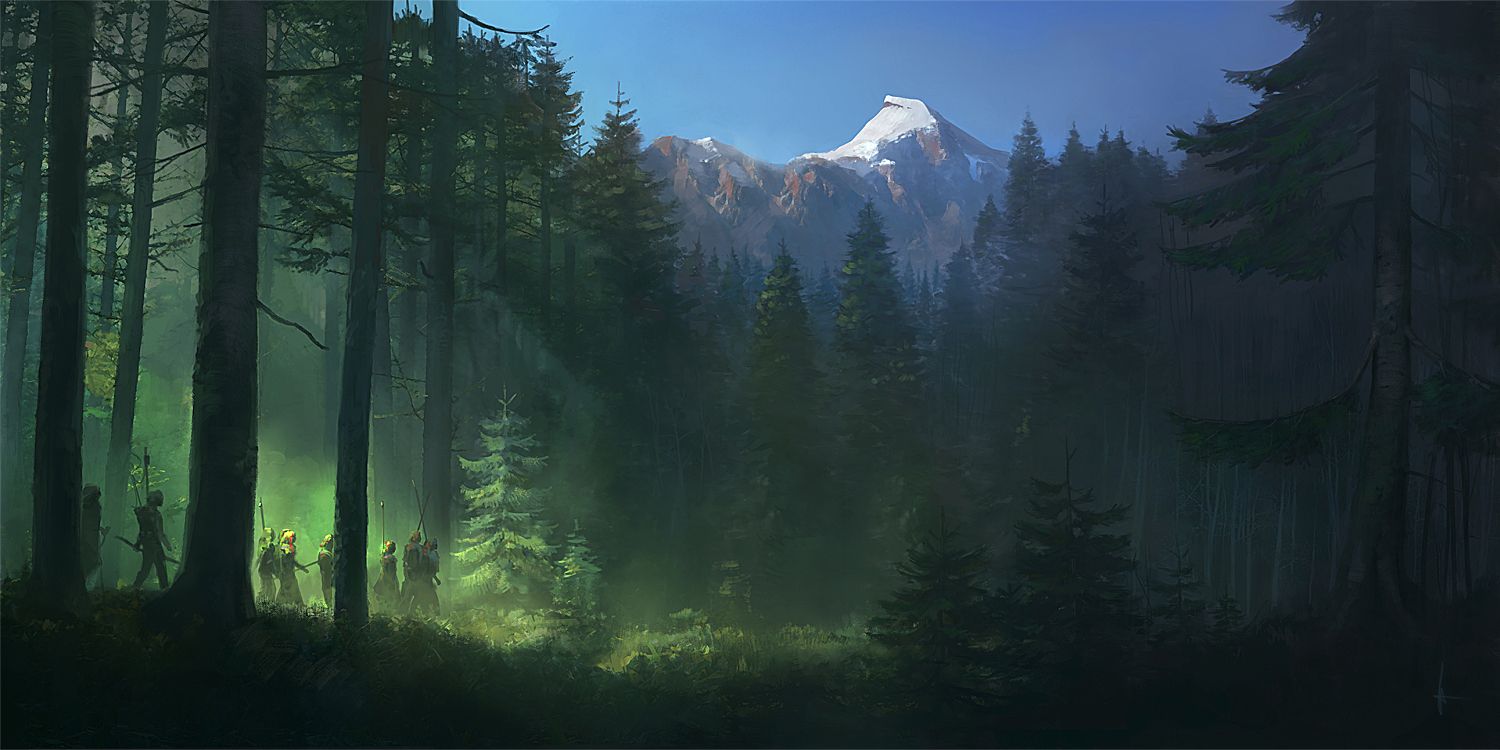Faith in Hest
Mythology & Lore
According to legend, Anonvall, god of the Forge, crafted the world out of the heart of a dying sun and presented it to his wife Hestina, goddess of love and creation, as a token of his affection. Hestina was so touched by her husbands present that she decided to make him a present of her own. It is said that all life on Hest was born through Hestina, and together both gods created the perfect paradise for themselves. Anonvall named their haven Hest, after his wife as she had brought life into the world and wanted every living creature to know who was responsible for their existence.
The world they created became a wondrous place full of secrets and hidden treasures. The ecosystem if full of thriving forests, frozen tundras and moving deserts, and is as diverse as the denizens that call it home.
But, Anonvall and Hestina were not the only gods responsible for life on Hest. While the gods of creation were building their perfect world, the gods Pulsivar the Deceiver and Xia Mistress of Death turned their attention towards their project. After tricking Hestina into leaving her planet, Pulsivar and Xia brought ruin and anguish to the once thriving world. The air chilled, and trees began to lose their leaves. Distraught, Hestina began to cry and the world became blanketed in her frozen tears. She watched helplessly as the precious life she and her husband had created begin to die. It took three years for Hestina to restore balance to the planet. In that time, much of what was created had been destroyed.
When the frozen tears thawed and life began to return to Hest, the gods of creation could not help but notice that life was not the same. Strange beasts had appeared, taking up where the previous life had once thrived. The forests seemed haunted by the dead, seeking vengeance for the life that was ripped from them.
From the east came a humanoid creature that mirrored the gods in their image. It is said that these creatures even spoke the gods tongue, and had been taught by Pulsivar the ways of the gods. They referred to themselves as Hestian, first of their kind and rightful rulers of Hest. Upon seeing the splendour of the goddess Hestina and learning her name, the Hestians vowed to worship her as their true god. This did not please her husband Anonvall who saw himself as the architect of their world and their true god.
To the west large humanoid lizards began crawling out from the watery depths of the ocean making their way inland from their they settled the largest content on the planet. They called themselves the Theriaxi and bred so quickly that soon enough the entire continent was brimming with their kind. Being a territorial species the Theriaxi began fighting one another for dominance of their lands and soon enough caught the attention of the Goddess of Death herself Xia. Approaching the Theriaxi she demanded that they continued their fighting in her name, and so enamoured where these warrior lizards that they would eventually worship her so devoutly that they started incorporating her into every aspect of their lives, both during war and in times of peace. From religious sacrifices to naming children after her. Xia was pleased by all of this and granted the Theriaxi many boons, from a resistance to pestilence and poisons to breathing underwater like their forefathers had.
Deep within the southern mountain range where life had been thought not to have survived the three years of death, the sound of clanging hammers echoed thought the hill sides. The familiar sound drew the attention of Anonvall, and what he discovered temporarily allowed him to forget his brooding about the Hestians and their preference for his wife. It is here where the Dwellers were found. A community of Blue skinned near Hestians that had taken up the art of smithing. Unlike the Hestians the Dwellers did not see the god as their superior, let alone their equal. This enraged the Anonvall and he sought out to put them in their place by forging the legendary warhammer Dwellerspite, naming it so as a slight against the peoples who had taken up his craft and had dared to question his ability. The Dwellers were so impressed by the gods work that they named him their patron of the Forge, and dubbed him the Forge Master. Not that Anonvall cared much for their devotion.
In the north, a different sort of hammering could be heard. The hammering of a war drum. These drums signed the coming of the dreaded Orc. Standing an average of 1.95 meters tall, these green skinned creatures were built for battle, towering over the average Hestian and boasting thick hide like skin and and tusk like teeth, the Orc was a devastating opponent. But Unlike their Theriaxi counterparts who only worshiped the Goddess of Death, the Orcs began to revere the ferocity of their war chief so fervently that they began to worship him as though he was a god. This enraged the existing gods, whom sent their followers to quell the imposter. But the zealotry of the Orcs would not be quenched, and their victory against the followers of the "True gods" only served to solidify Ocrim's claims to be the God of War.
Type
Religious, Organised Religion
Leader
Remove these ads. Join the Worldbuilders Guild









Comments